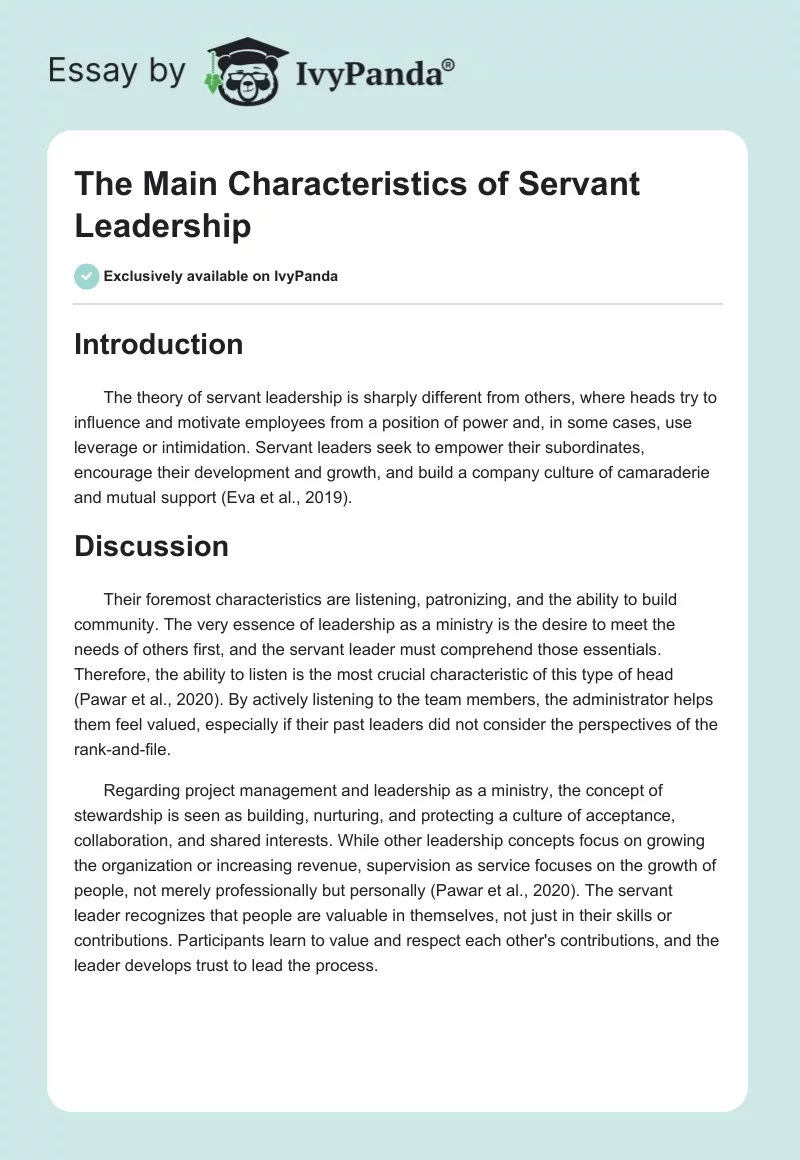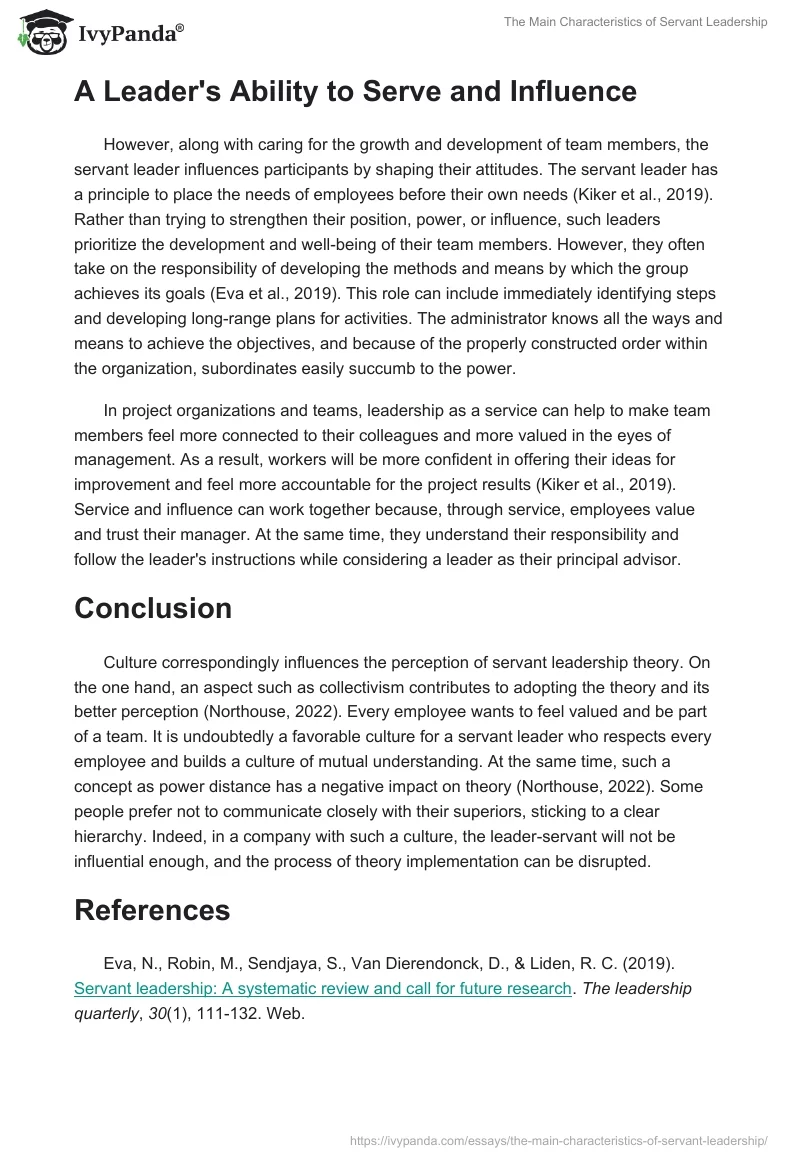Introduction
The theory of servant leadership is sharply different from others, where heads try to influence and motivate employees from a position of power and, in some cases, use leverage or intimidation. Servant leaders seek to empower their subordinates, encourage their development and growth, and build a company culture of camaraderie and mutual support (Eva et al., 2019).
Discussion
Their foremost characteristics are listening, patronizing, and the ability to build community. The very essence of leadership as a ministry is the desire to meet the needs of others first, and the servant leader must comprehend those essentials. Therefore, the ability to listen is the most crucial characteristic of this type of head (Pawar et al., 2020). By actively listening to the team members, the administrator helps them feel valued, especially if their past leaders did not consider the perspectives of the rank-and-file.
Regarding project management and leadership as a ministry, the concept of stewardship is seen as building, nurturing, and protecting a culture of acceptance, collaboration, and shared interests. While other leadership concepts focus on growing the organization or increasing revenue, supervision as service focuses on the growth of people, not merely professionally but personally (Pawar et al., 2020). The servant leader recognizes that people are valuable in themselves, not just in their skills or contributions. Participants learn to value and respect each other’s contributions, and the leader develops trust to lead the process.
A Leader’s Ability to Serve and Influence
However, along with caring for the growth and development of team members, the servant leader influences participants by shaping their attitudes. The servant leader has a principle to place the needs of employees before their own needs (Kiker et al., 2019). Rather than trying to strengthen their position, power, or influence, such leaders prioritize the development and well-being of their team members. However, they often take on the responsibility of developing the methods and means by which the group achieves its goals (Eva et al., 2019). This role can include immediately identifying steps and developing long-range plans for activities. The administrator knows all the ways and means to achieve the objectives, and because of the properly constructed order within the organization, subordinates easily succumb to the power.
In project organizations and teams, leadership as a service can help to make team members feel more connected to their colleagues and more valued in the eyes of management. As a result, workers will be more confident in offering their ideas for improvement and feel more accountable for the project results (Kiker et al., 2019). Service and influence can work together because, through service, employees value and trust their manager. At the same time, they understand their responsibility and follow the leader’s instructions while considering a leader as their principal advisor.
Conclusion
Culture correspondingly influences the perception of servant leadership theory. On the one hand, an aspect such as collectivism contributes to adopting the theory and its better perception (Northouse, 2022). Every employee wants to feel valued and be part of a team. It is undoubtedly a favorable culture for a servant leader who respects every employee and builds a culture of mutual understanding. At the same time, such a concept as power distance has a negative impact on theory (Northouse, 2022). Some people prefer not to communicate closely with their superiors, sticking to a clear hierarchy. Indeed, in a company with such a culture, the leader-servant will not be influential enough, and the process of theory implementation can be disrupted.
References
Eva, N., Robin, M., Sendjaya, S., Van Dierendonck, D., & Liden, R. C. (2019). Servant leadership: A systematic review and call for future research. The leadership quarterly, 30(1), 111-132. Web.
Kiker, D. S., Callahan, J. S., & Kiker, M. B. (2019). Exploring the boundaries of servant leadership: A meta-analysis of the main and moderating effects of servant leadership on behavioral and affective outcomes. Journal of Managerial Issues, 31(2), 172-197. Web.
Northouse, P. (2022). Leadership: Theory and practice (9th edition). Sage Publications.
Pawar, A., Sudan, K., Satini, S., & Sunarsi, D. (2020). Organizational servant leadership. International Journal of Educational Administration, Management, and Leadership, 63-76.


